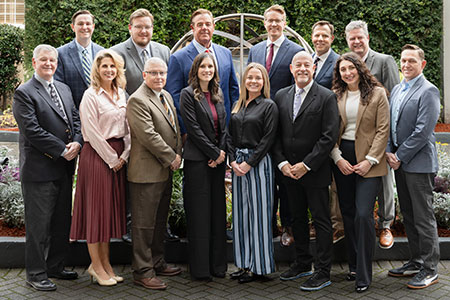“PDGM [Patient Driven Groupings Model] is going to be big,” says Managing Director Bradley Smith of Vertess, a Texas-based healthcare focused M&A advisory firm.
PDGM is a new case-mix classification model used to structure healthcare payment categories and reimbursement thresholds. Come January 1, 2020, there will be a change in the unit of home health payment from a 60-day period to a 30-day period, forcing smaller providers to make substantial adjustments to their operating models.
“It will be similar to what happened in home health in 2000, and it will cause a massive consolidation. Similar to competitive bids that the DME [Durable Medical Equipment] market went through in 2009 and 2010, we are going to see a consolidation of a significant portion of the marketplace, creating opportunity for existing players and generating more PE interest. PDGM is a disruptive opportunity for them to execute a rollup strategy and capture a substantial part of the market,” says Smith.
by Hilsman Knight, CM&AA, Managing Director
Volume 6 Issue 16, August 13, 2019
I recently came across an article that discussed the key drivers used to estimate the value of a business. This article highlighted seven points crucial to understanding a business's valuation in a transaction. These points were 1) earnings before interest, taxes, depreciation, and amortization (EBITDA) size, 2) revenue trends, 3) profit margins, 4) customer concentration, 5) industry concentration, 6) industry strength, and 7) depth of the management team.
I think that this list would be of little surprise to any professional in the merger and acquisition community. The article's authors hit the nail square on the head in their understanding of valuation on a macro level.
This information can be used to understand valuations of businesses in healthcare. While these qualifying factors provide guiderails that any well-run company should strive to manage and are relevant to any transaction, I thought it would be appropriate to peel back the onion on valuation even further with a more healthcare-focused theme, tying in VERTESS's healthcare experience. More specifically, I wanted to focus on qualitative factors that affect valuation in ambulatory surgery centers (ASCs) as they are one area of my expertise.
In no order, I have included what I believe to be the most applicable qualifiers for driving value in an ASC transaction.
1. CON vs. Non-Con State
A state's certificate of need (CON) status cannot be controlled by the owners of an ASC, but it is an important factor in a transaction and can have a significant impact on the type of buyer interested in an investment opportunity.
ASCs operating in a CON state are often attractive to buyers as the surgery centers' owners have already overcome a significant obstacle to development: the securing of the CON. This is a requirement that those individuals interested in opening new ASCs will need to address.
On the other hand, ASCs operating in a non-CON state may prove less appealing to prospective buyers. Buyers can analyze the startup costs of opening a de novo ASC versus acquiring an operating location. If the costs are similar, this can minimize the pool of buyers because it is often more advantageous to start new. For an optimal valuation, a limited number of interested parties is not desirable.
In summary, owning an ASC in a CON state should prove beneficial to valuation.
2. In-Network vs. Out-of-Network
Buyers in today's market are increasingly less interested in taking on the risk of purchasing ASCs with a majority or significant portion of patients receiving out-of-network services. Insurance companies have been pushing back against providers that bill for out-of-network care, which is increasing the risk level for collecting on out-of-network claims. When providers attempt to bill for procedures performed on out-of-network patients, payors are often finding ways to delay reimbursement or outright rejecting claims.
When a facility is in-network, buyers gain the ability to model future cash flows with more accuracy. Developing these models adds a layer of predictability and alleviates future risk related to the acquisition.
In summary, a healthy mix, with the majority of the patient census as in-network beneficiaries, is more conducive to a better valuation.
3. Commercial vs. Government Insurance
In a parallel domain to the previous point, patient network status directly impacts an ASC's payor mix. This payor mix can weigh heavily on the outcome of a valuation and sale. Well-negotiated commercial contracts can lead to higher reimbursements from payors, which should subsequently lead to higher revenues. Government insurance contracts (Medicare, Medicaid) cannot be negotiated and thus provide ASCs with a fixed, pre-determined payment. A heavily dependent volume of governmental insurance can compress valuation and limit the pool of buyers. Unfortunately, it is often difficult to alter one's payor mix to compensate for greater commercial patients. However, having a good understanding of contracts and payor mix can help identify which buyers could be targeted.
In summary, a healthy payor mix, with a majority of patients covered by commercial payors, can prevent valuation issues and keep more buyers interested in the investment opportunity.
4. Specialty Type
Not all specialties are created equal concerning valuation. More specifically, this concerns those specialties receiving varying degrees of reimbursement rates compared to other specialties. One example would be the difference in reimbursement from specialties like orthopedics, spine, and ophthalmology compared to pain management, general surgery, and gastroenterology. The former tends to benefit from higher valuations due to better reimbursement trends.
In summary, specialty type will have an impact on valuation expectations. It is not something that can be easily remedied on its own. But the next point may help alleviate some of the accompanied valuation issues that come inherent with focusing in a specialty.
5. Single vs. Multiple Specialty
Along the same vein as the previous point, but worth carving out separately, is identifying an ASC's focus as a single- or multi-specialty facility. Similar to the industry concentration point identified in the introduction, ASCs are tied to their own version of industry concentration. Their ability to offer multiple specialties allows for greater valuation due to be less susceptibility of perceived industry risks.
Risks such as those associated with reimbursement can shift substantially. Specialized ASCs are more prone to experiencing significant financial impact if such shifts occur and they cannot hedge away from potential downward spirals.
In summary, the ability offer multiple specialties in an ASC can mitigate against industry risks, regulatory risks, and reimbursement risks and can therefore increase valuation expectations.
6. Number of Operating Physicians
When ASC owners call VERTESS seeking guidance concerning selling their business, oftentimes they are the sole owner and operating physician in their facility. The immediate question following introductions concerns whether an exit strategy has been formulated. The answer to this question tends to associate with an enormous disparity in valuation. The lack of an implemented exit strategy can decimate valuation to the salvage value of the assets in the building. This is compared to an owner with a well-constructed exit strategy who might realize a significant valuation for their planning.
An absent succession plan is not unique to ASC owners but is rather a general oversight for many business owners. It can become especially problematic for an ASC with a single physician owner because the volume of that facility is entirely dependent upon that individual, with a departure of the physician halting the future volume of the business.
In summary, ASCs with just one or only a few owners who plan on exiting the business should gain an understanding of the impact of their exit on the future of the facility. Proper preparations should be made years in advance to better realize valuation goals.
7. Number of Locations
The final topic on this list may be the most relatable to all business owners outside the sphere of healthcare and is most comparable to the initial seven points highlighted in the introduction. More ASC locations signify the ability to more easily scale operations. Multiple locations contribute to more throughput, thus allowing the company to generate more revenue. While a simple concept, the fact is that larger ASCs will generate more interest from a more diverse list of potential suitors because of realizing growth. Growth can be achieved in a number of ways, such as properly managing expenses to better marketing efforts, but significant growth is achieved by opening locations in new markets.
In summary, multiple locations provides a greater market footprint. It leads to more interested buyers because they can see the value of a replicable business model.
The Value of ASC Valuation Expertise
While healthcare shares many qualities with other industries, it is unique in numerous and very significant ways. Within healthcare, ASCs have many of their own unique qualities. VERTESS focuses on healthcare because we understand what is similar, what is different, and what these similarities and differences mean to attracting buyers and securing a fair price for your business.
BROOKLYN PARK, Minn. – Reliable Medical Supply has grown organically to four locations in Minnesota, but with an outside investor now on board, it has set its sights on expanding through acquisition into new geographical markets.
The first area of focus for the company, whose top product categories are complex rehab and vents: buying another company that will allow it to better serve patients in western Wisconsin.
“There are patient access issues out there,” said Debra Kalk, president and CEO. “There are no suppliers serving that area, especially on the vent side. To give those patients access and two-hour response times and 24/7 on-call services, we need to be strategically closer.”
YARMOUTH, Maine – It’s still early, but CMS’s proposed changes to the competitive bidding program could renew M&A activity, analysts say.
In the short term, the agency wants to implement an any willing provider provision when the current bid contracts expire, allowing any Medicare-enrolled provider to serve beneficiaries while it overhauls the program.
“Now that you don’t have these handcuffs on, you can go out and grow organically or through acquisitions,” said Brad Smith, managing director and partner at Vertess. “That will increase market competition and drive more demand.”
Originally posted by HME News on March 9, 2018
TUCSON, Ariz. – When it comes to mergers and acquisitions in the complex rehab industry, it’s not just the two national providers that are making moves, says Brad Smith, managing director and partner at Vertess.
“There are others,” Smith said, “particularly a number of regional players, $10 million to $50 million, and smaller players, $10 million and under.”
Here’s what Smith had to say about why “there are options out there,” even in this considerably consolidated market.
[Continue Reading...]
Originally Published by HME News on January 19, 2018
YARMOUTH, Maine – Expect to see large regional HME players get bigger in the year ahead as they look to increase their market share, say M&A analysts.
“These regionals are really looking to grow their territory,” said Brad Smith, managing director/partner at Vertess. “I think 2018 is going to be a huge year.”
And that’s building on a strong 2017. In the third quarter of last year, 18 transactions were completed in the HME sector, the highest since 2014, according to The Braff Group.
“I think both buyers and sellers are getting comfortable with where true valuations are,” said Patrick Clifford, a managing director at The Braff Group. “Valuations aren’t overly terrific, but they aren’t bottom fishers, either.”
[Continue Reading...]
Originally Posted by HME News on Friday, January 5, 2018
Eric Hymes, a new managing director at M&A firm Vertess, got his start in the supplies market, with diabetes, urologicals and wound care supplies his “first and second languages.” Here’s what Hymes, whose previous experience includes stints at CCS Medical and Coloplast, had to say about why the supplies market is hot and getting hotter, and why the recent tax overhaul might spur M&A activity.
HME News: What kind of activity are we seeing in the supplies market right now?
Eric Hymes: We continue to see this verticalization of the supply chain. You have distributors that are being bought by major manufacturers, and you have both that are consuming the DME provider, small and large alike.
HME: What’s attractive about this market?
[Continue Reading...]
Originally Published by HME News on November 28, 2017
TUCSON, Ariz. – Vertess, a healthcare M&A advisory firm, has added DME executive Eric Hymes as managing director. Hymes’ past experience includes a stint as general manager and senior executive with medical supplies provider CCS Medical, where he had responsibility for more than $100 million in P&L. “While my career in healthcare has always been focused on the end user and their families, the apex of my experience was successfully navigating an ever-shifting landscape of healthcare insurance policy and associated reimbursement pressures,” he said.
[Continue Reading...]
Originally Published by Sleep Review on November 27 2017
VirtuOx Inc, a healthcare information technology company providing diagnostic tools and services to enable healthcare organizations and professionals diagnose and treat a variety of disease states, has acquired ProFox Associates Inc and NPF Inc. The transaction was facilitated by VERTESS, a healthcare mergers and acquisitions advisory firm.
VirtuOx has begun executing an acquisition strategy to grow strategically within the lab services sector. “This is the first of many acquisitions for us,” says Steven Lica, VirtuOx CEO, in a release. “Our ability to create interoperability among multiple platforms will continue to drive us towards increased innovation with a goal of cost effectiveness and accuracy for healthcare providers and patients alike.”
[Continue Reading...]
Originally Published by HME News on September 29, 2017
CORAL SPRINGS, Fla. – VirtuOx, a healthcare IT company providing diagnostic tools and services focused on sleep and respiratory disease states, has acquired ProFox Associates and NPF, it announced Sept. 28. ProFox and NPF both offer oximetry software and technology. “This is the first of many acquisitions for us,” said Steven Lica, CEO of VirtuOx. “Our ability to create interoperability among multiple platforms will continue to drive us toward increased innovation with a goal of cost effectiveness and accuracy for healthcare providers and patients alike.” Vertess advised VirtuOx on the transactions.
[Continue Reading...]
Originally Published by HMW News on July 26, 2017
WVU Home Medical Equipment held a ribbon cutting ceremony this week for its new store in Bridgeport, West Va. The store gives WVU HME, part of St. Joseph’s Hospital, a central location to provide everything from chair lifts to wrist splints to customers in north central West Virginia…New York-based Vertess continues its national expansion with the addition of Tucson, Ariz.-based Hilsman Knight as managing director. “I am very excited to join the Vertess team and hope my strong healthcare M&A background will help us expand, especially in the Western U.S.,” he said. Knight recently facilitated the sale of the largest Miracle Ear franchise in Arizona to a West Coast private equity group.
[Continue Reading...]
Originally Published by HME News on May 12 2017
YARMOUTH, Maine – Teijin Limited’s recent announcement that it was exiting the U.S. homecare market is a textbook example of the cooling off of a once red-hot market, say industry analysts.
“We’ve seen these guys coming in and going out like a revolving door,” said Rick Glass, president of Steven Richards & Associates. “The U.S. is such a big market that it looks desirable to these overseas players and then they get in here and find out it’s a little more complicated than that.”
Teijin announced in late April that it was selling Braden Partners—better known as Pacific Pulmonary Services—and Associated Healthcare Systems to PPS HME, an affiliate of Quadrant Management, a New York-based private equity and restructuring firm.
When Teijin acquired Braden Partners, the provider was in growth mode. In 2010, one year after Teijin made the acquisition, it received nearly $46.1 million from Medicare for stationary oxygen concentrators, according to the HME Databank. But by 2015, the latest figures available, that had dwindled to $13.1 million.
[Continue Reading...]



